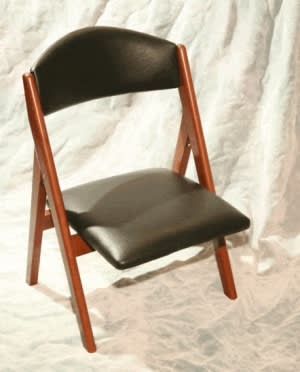After the tragic death of Nadav and Avihu, Aharon and his remaining sons are commanded to continue officiating as Kohanim, rather than conducting themselves as mourners (Vayikra 10:6). Since they are prohibited from letting their hair grow, we learn that ordinarily mourners are forbidden to cut their hair (Moed Katan 14b, SA YD 390:1).
Other prohibitions applying to mourners include wearing shoes (YD 382), sitting on chairs (YD 387), and wearing laundered garments (YD 389). Shoes, chairs, neat clothes, and trimmed hair are four habits which are particularly connected to our sense of dignity and elevation.
This is evident from a halakhic point of view from the fact that all of these are considered part of the special honor of kings. Three are mentioned together explicitly by the Rambam: “The king takes a haircut every day, and grooms and adorns himself with attractive and glorious clothes, as it is said “The king in his beauty shall your eyes see”; and sits on a royal throne in his palace.” (Rambam Melakhim 2:5).
The dishonor of going barefoot is also implied in the very same chapter: “And he does not remove his shoe [in the chalitza ceremony] as it is said “she spits in his face”, and this is a disgrace.” (Melakhim 2:3). Not only the spitting but also the shoe removal itself is considered a disgrace, as we explained in our column on parshat Shemot.
Another relevant halakhic parallel is the laws of Yom Tov, when we are supposed to look our best. Cutting the hair and washing clothes are forbidden on Chol HaMoed so that we will be sure to make these preparations for Yom Tov (SA OC 521 and 534). Indeed, the inclusion of the laws of mourning in tractate Moed Katan, which deals with the laws of Chol HaMoed, reflects the fact that the rejoicing of the holidays and the sorrow of mourning are in some sense opposites.
SYMBOLISM OF HAIR AND SHOES
Apart from their evident importance for grooming, hair and shoes have a particular symbolism in Chasidic thought which is also relevant to their role in mourning.
Hair, which while emanating from the live head is inanimate and obscures – and adorns – the head and face is identified in Chasidic though with the aspect of judgment, which obscures yet makes bearable the Divine glance (see column on Purim). This aspect of HaShem’s providence is particularly evident at a time of morning.
Shoes insulate us from the ground, which usually has the symbolism of lowliness and gross materiality (see column on parshat Shemot). The mourner is absorbed in grief and finds it hard to elevate his or her thoughts; in addition, the mourner may feel a special affinity to the earth where the departed is now buried. (Note that mourning customs begin at burial; and the Rema in YD 382:5 mentions a custom to go barefoot from the burial itself.)
Rabbi Meir is in the process of writing a monumental companion to Kitzur Shulchan Aruch which beautifully presents the meanings in our mitzvot and halacha. He is also directing the Jewish Business Response Forum at the Center for Business Ethics and Social Responsibility, Jerusalem College of Technology – Machon Lev. The forum aims to help business people run their firms according to Torah, by obtaining prompt, relevant responses to their questions.
Rabbi Asher Meir is the author of the book Meaning in Mitzvot, distributed by Feldheim. The book provides insights into the inner meaning of our daily practices, following the order of the 221 chapters of the Kitzur Shulchan Arukh.
The words of this author reflect his/her own opinions and do not necessarily represent the official position of the Orthodox Union.

